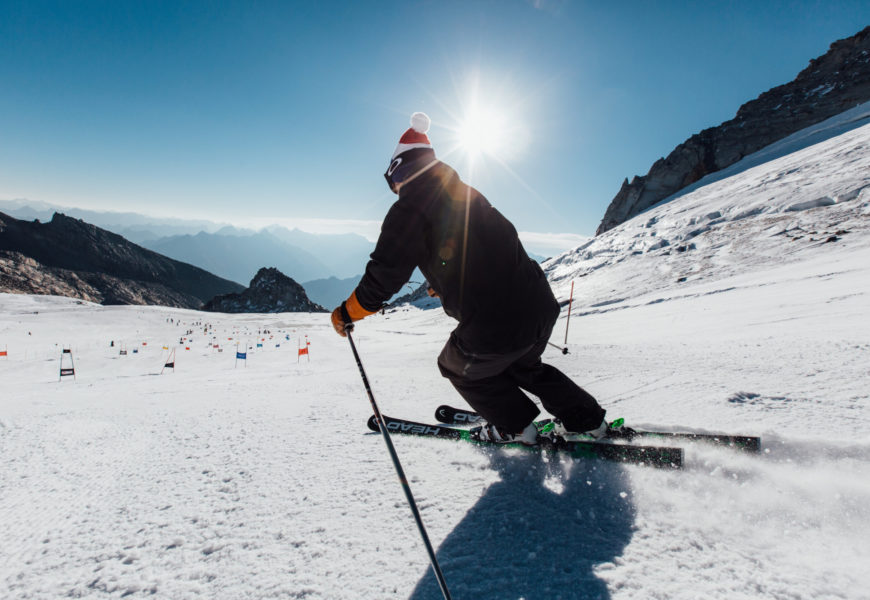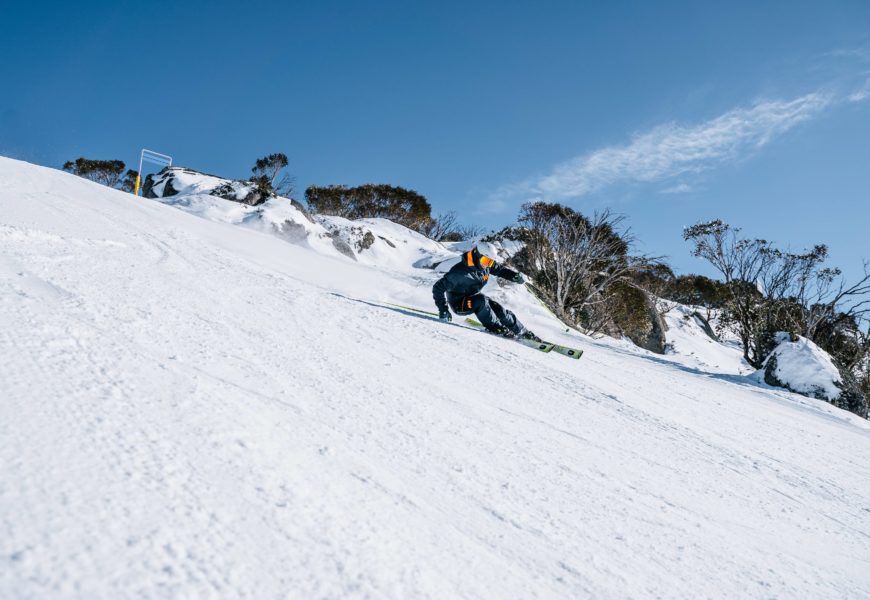4 Advanced Skiing Mistakes

Votes:
Becoming a great skier is no easy feat: it requires a combination of technical ability, agility and practice.
Even if you’re a good skier there's always room for improvement, and to help you fine-tune your skiing, here we go through the most common errors made by advanced skiers.
Watch the video:
1. Park and Ride
A typical mistake made by advanced skiers is the “park and ride”. What do we mean by park and ride? Have you ever noticed or seen skiers carving from one side of a slope to the other locked on their edges? That's exactly what park and riding is.
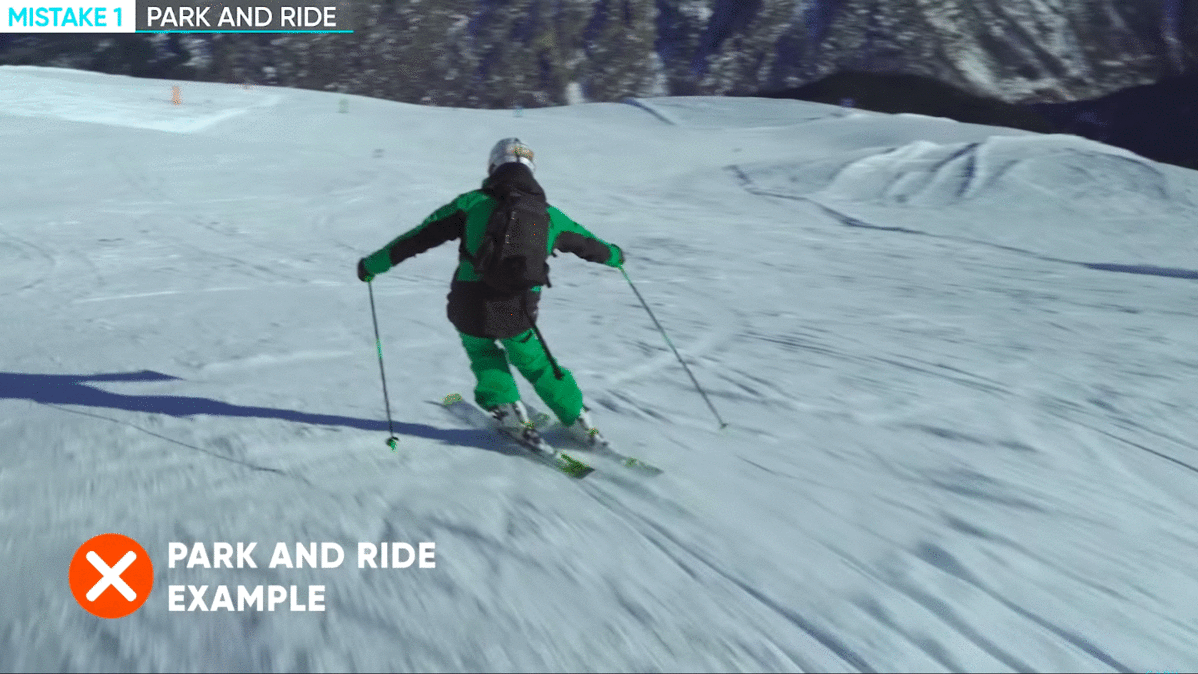
A skier who makes this mistake lets the skis do all the work and remains locked on their edges. A good skier—as opposed to a park and rider—drives the ski through the turn, and the track left behind their skis is nice and round.
The aim is to progressively build the edge angle from the very beginning of the turn into the turn's apex, at which point the edge angle is highest and the pressure is greatest. This is the point from which we can start to release our skis, releasing pressure in order to start a new turn.

Build the edge angle from the beginning of the turn into its apex
2. Overextension in turn transition
Another mistake made by advanced skiers is excessive extension at the beginning of the turn. If you get too tall at the beginning of a turn, you risk losing contact with the snow.
Instead of overextending upwards through your transition, as you start your turn try to stay a bit lower, more compact and focus on moving from one foot to the other as you start your turn.

You want to extend your new outside leg into your turn progressively, with the leg being longest at the apex of the turn, which is where the pressure is the greatest.
Be patient with your extension, and make sure you’re not getting too tall too early.
3. Your balance is too far forward
A good stance and balance are essential for good skiing. A common mistake with beginners and intermediates is that they stand slightly back; a common mistake with advanced skiers is that they sometimes balance too far forward.
"A common mistake with beginners and intermediates is that they stand slightly back; a common mistake with advanced skiers is that they sometimes balance too far forward."
In order to steer skis effectively, you want to stand right in the middle of your feet.
Let's imagine that the foot is a tripod. We want to have three points on the foot supporting our mass: the big toe ball of the foot, the pinky toe ball of the foot and the heel. Try to maintain those three points underneath you as you’re skiing down the mountain.

The three points on the foot for effective balance
Leaning too far forward, you risk washing your heels out and skidding your turns instead of steering. You want your heels to follow your toes, not wash them out.
Leaning too far forward, you lose access to some movements necessary to solid steering. Stay on your "tripods" and stay strong in your turns.
Improve your balance with Carv
The Carv app has many features designed to help you improve your balance and fine-tune your skiing. These drills have been created with Kaylin Richardson, Olympic racer and Eric Lipton, PSIA elite coach and demo team skier. Carv's interactive drills will take your skiing to the next level with turn-by-turn audio feedback, to help you get the most from your time on the slope.
- Develop your balance with Balance training, and move through 20 levels of assessment.
- Use the Fore:aft ratio monitor to pinpoint your weight distribution.
- Tear it up in Free ski mode for audio feedback at the end of your runs.
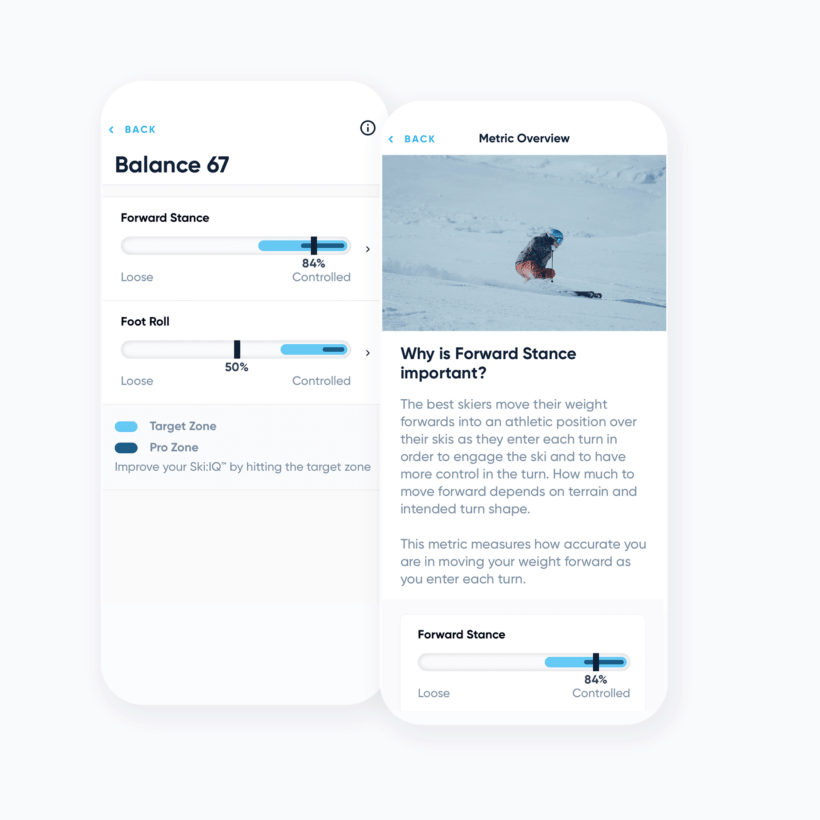
4. Premature absorption of bumps
Another mistake made by advanced skiers occurs in the bumps. Skiers sometimes bend and flex their knees up towards the chest too early in order to absorb the mogul. They risk being bucked off the top of the mogul and losing contact with the snow.
Instead, try to be more patient and extend your legs against the bump, waiting for the bump to push your feet and knees back underneath you as much as required.
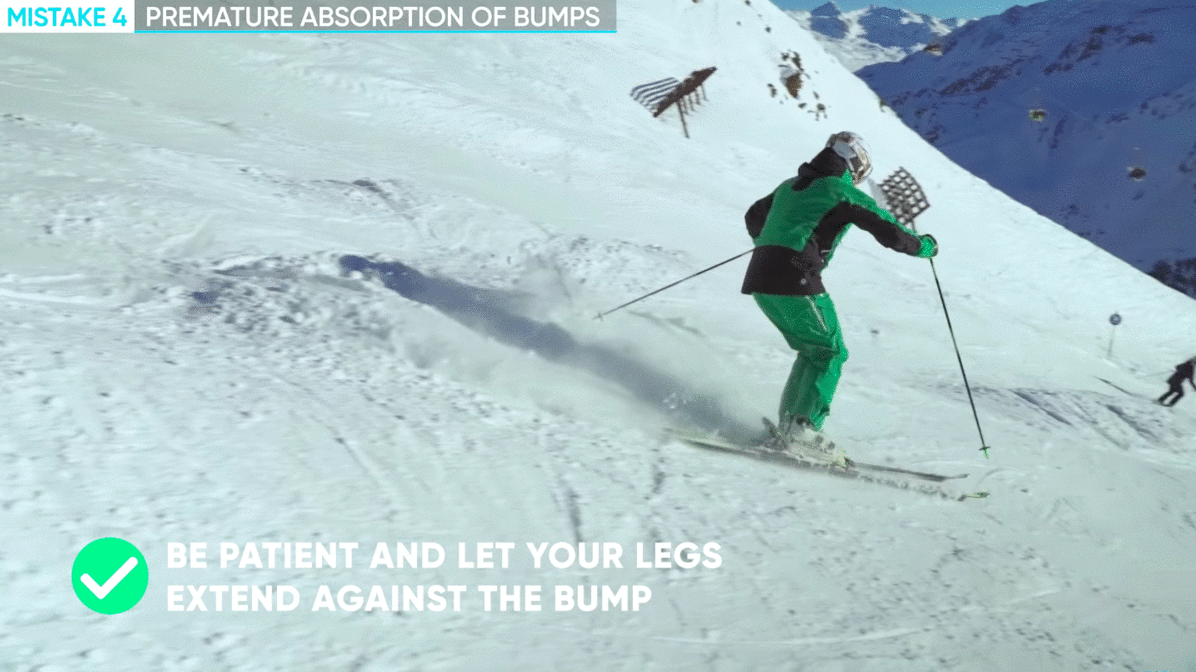
By correcting these small mistakes, you'll be able to take your skiing to the next level. Now get out there!
